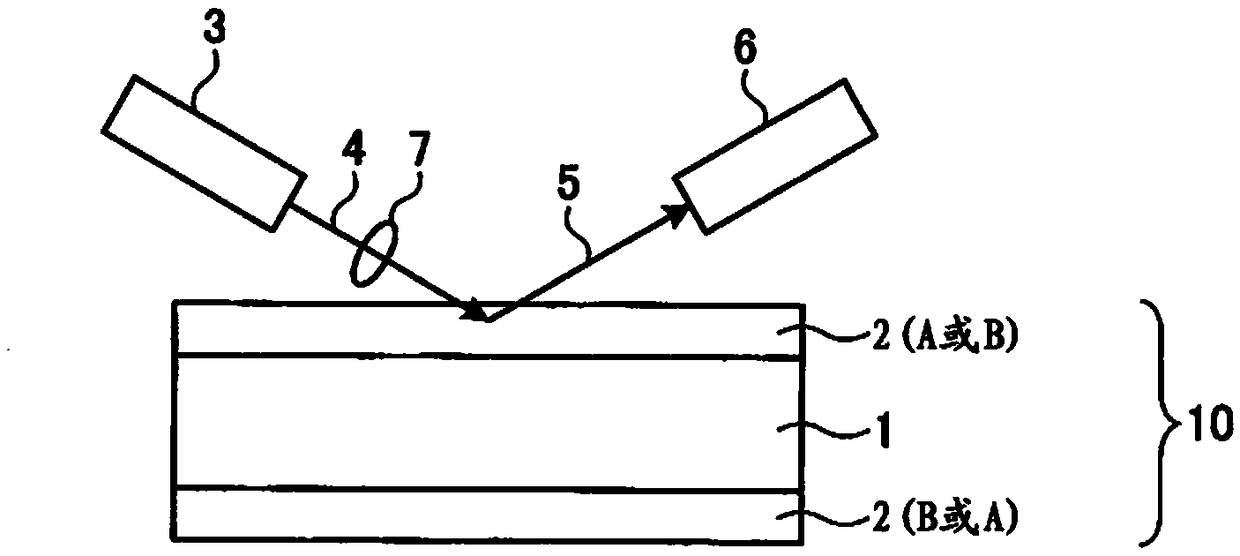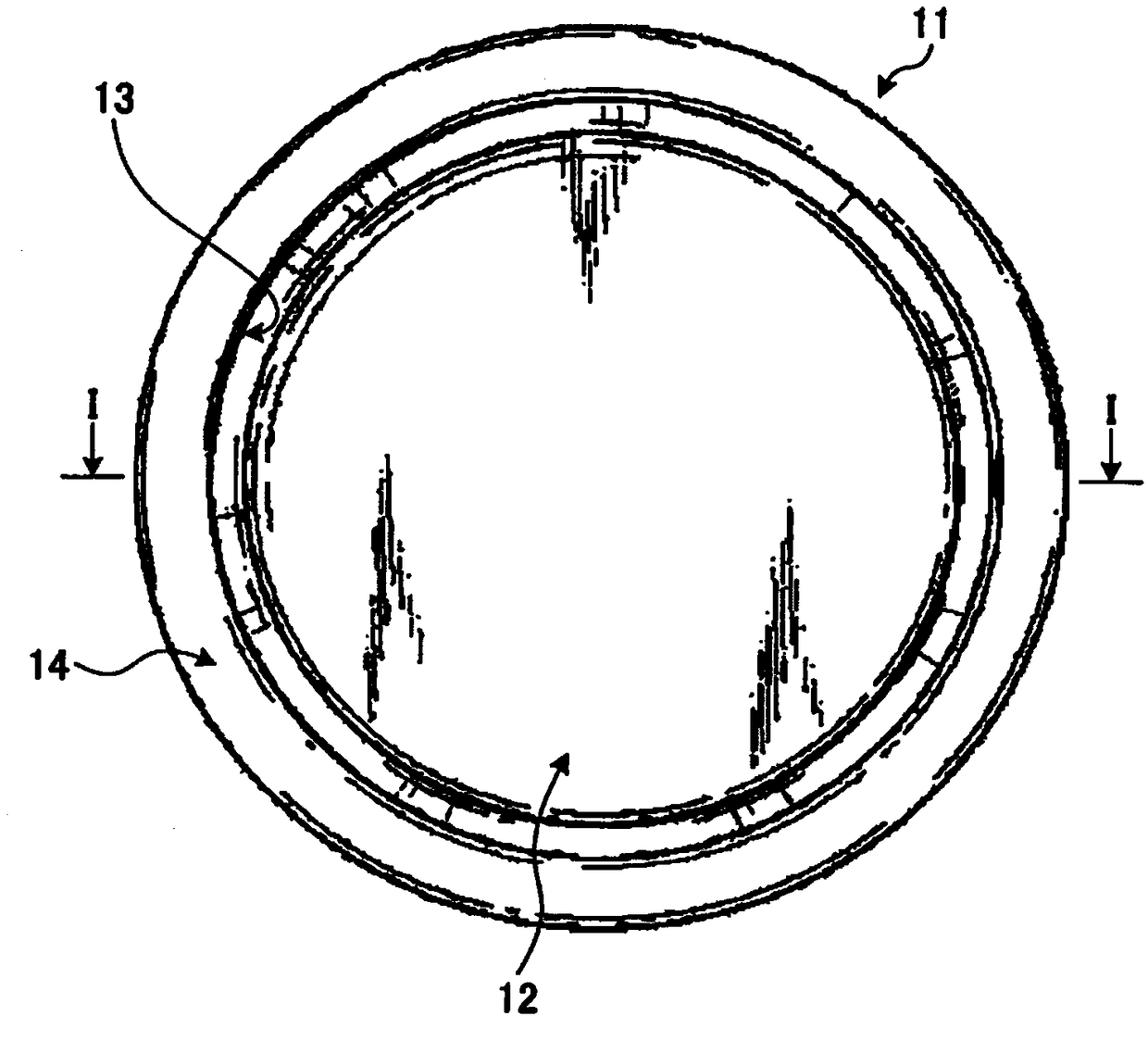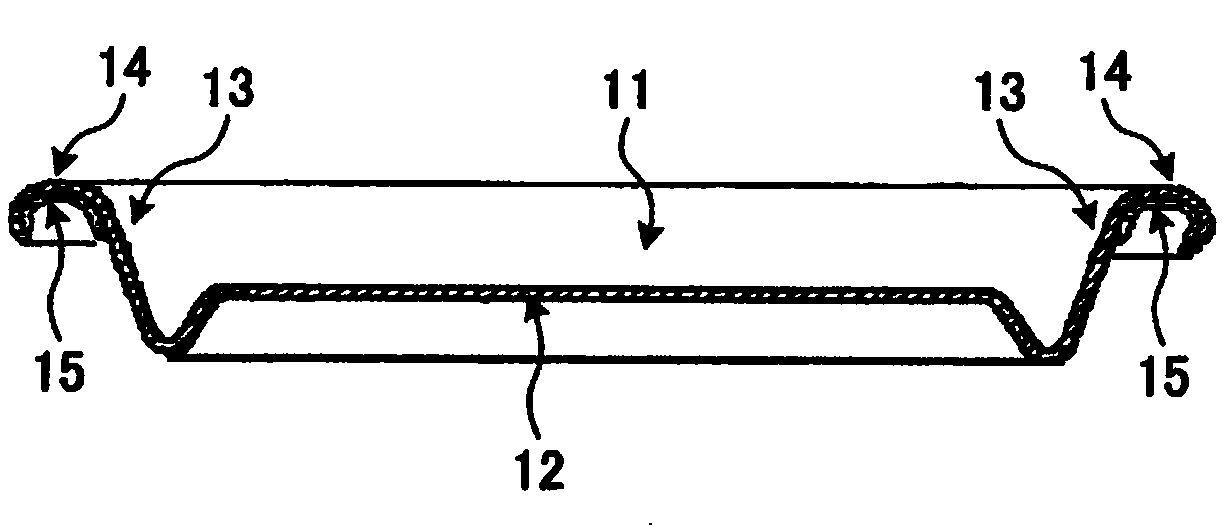Resin-coated metal sheet for can ends
A technology for metal plates and can ends, applied in the field of resin-coated metal plates for can ends, to achieve excellent seaming resistance and excellent content resistance
- Summary
- Abstract
- Description
- Claims
- Application Information
AI Technical Summary
Problems solved by technology
Method used
Image
Examples
Embodiment Construction
[0034] Hereinafter, one embodiment of the present invention will be described in detail with reference to the drawings. In addition, this invention is not limited by this embodiment.
[0035]
[0036] First, refer to figure 1 , the measurement method of the laser Raman spectroscopy used in the present invention will be described. Such as figure 1 As shown, for a resin-coated metal plate 10 in which a resin film 2 is laminated on both sides of a metal plate 1, laser light 4 oscillated by a laser oscillator 3 is incident on the resin film 2 on one side, and is scattered by a beam splitter 6. The Raman scattered light 5 is split. In the laser Raman spectroscopy, the beam diameter of the laser light 4 irradiated is variable by the lens 7, and the crystallinity of a region of a necessary size can be evaluated. Furthermore, by reducing the beam diameter of the laser beam 4 to be irradiated, it is possible to evaluate the degree of crystallinity of the minute domain of the resi...
PUM
| Property | Measurement | Unit |
|---|---|---|
| melting point | aaaaa | aaaaa |
| thickness | aaaaa | aaaaa |
| full width at half maximum | aaaaa | aaaaa |
Abstract
Description
Claims
Application Information
 Login to View More
Login to View More - R&D
- Intellectual Property
- Life Sciences
- Materials
- Tech Scout
- Unparalleled Data Quality
- Higher Quality Content
- 60% Fewer Hallucinations
Browse by: Latest US Patents, China's latest patents, Technical Efficacy Thesaurus, Application Domain, Technology Topic, Popular Technical Reports.
© 2025 PatSnap. All rights reserved.Legal|Privacy policy|Modern Slavery Act Transparency Statement|Sitemap|About US| Contact US: help@patsnap.com



